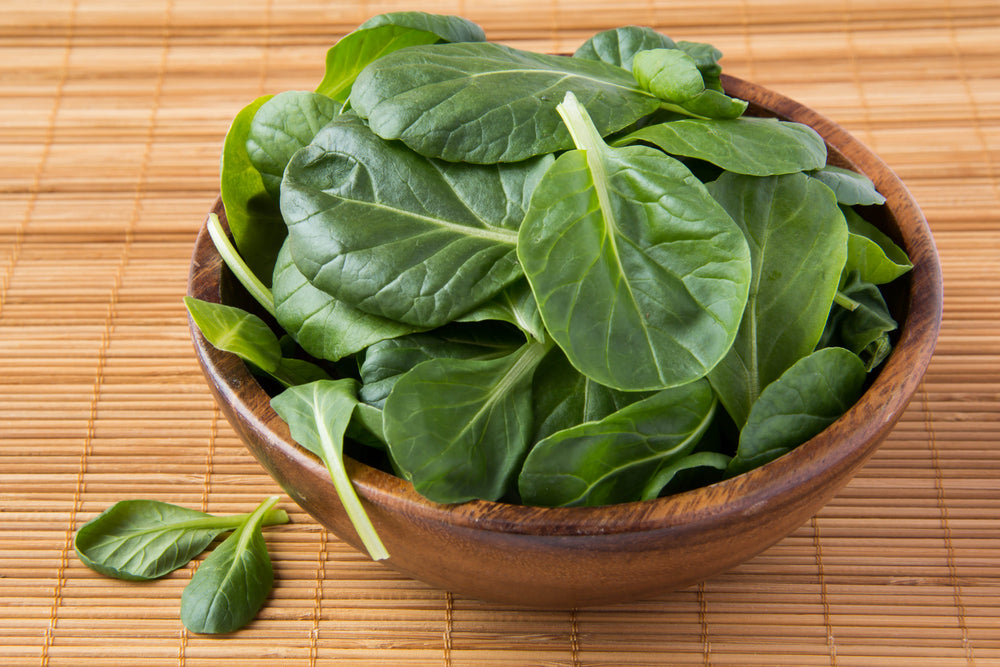October 27, 2015
8 Most Nutrient Dense Foods For Everyday Meal Planning
 How do you make some of the most nutrient dense foods, especially ones like Brussels sprouts, part of your nutrition routine? We've put together a list of uses for some of the more daunting options, as well as some you may have already incorporated into your meal management bag. We've compiled some uses for foods with high nutrient rankings on the ANDI (Aggregate Nutrient Density Index) nutrition scale. (The scale is out of a 1000, and the higher the number, the more nutrient dense the food is.) Dig in below!
How do you make some of the most nutrient dense foods, especially ones like Brussels sprouts, part of your nutrition routine? We've put together a list of uses for some of the more daunting options, as well as some you may have already incorporated into your meal management bag. We've compiled some uses for foods with high nutrient rankings on the ANDI (Aggregate Nutrient Density Index) nutrition scale. (The scale is out of a 1000, and the higher the number, the more nutrient dense the food is.) Dig in below!
Tuna
Tuna isn't known as the super fish for nothing. You may already use fish like salmon for their omega-3 content, but tuna delivers the same nutrients, with an ANDI score of 46 compared to salmon's 39.Steak
Whether you make it on the stovetop or on the grill, a tuna steak is a great high-density, highly nutritious replacement for your standard beef sirloin steak.Salad
Adding on top of a salad adds flavor and gives your side salad a boost of omega-3s that your lunch may have been lacking.
Spinach
The starter kit green, spinach is easily added to just about anything. Tasty every which way, from from from raw to sautéed, this leafy green proves that eating the most nutrient dense foods doesn't have to be too difficult.Smoothies
If you are one to enjoy a protein or fruit smoothie during the day, adding a handful of spinach to your smoothie routine gives it a great nutritional boost with minimal impact on taste.Salad
Replacing your favorite salad's iceberg lettuce with spinach is an easy way to increase the nutritional value. While iceberg lettuce does contain water that aids hydration, it mostly adds crunch (think cucumbers). Leaving some in your salads is okay, but using spinach just makes your salads work that much harder for you.
Kale
There's a reason kale is gaining in popularity. You hear about it everywhere, and even now mainstream restaurants are coming out with menu items that use this leafy green. With good reason, as cooked kale scores a perfect 1000/1000 on the ANDI scale, making it one of the most nutrient dense foods out there, and the powerhouse green to rule them all. Think of kale as the Schwarzenegger of the vegetable world.Chips
That's right, chips. These greens have a raw crunch that can be used to your snacking advantage. Simply season kale pieces that have been cut or torn with olive oil and salt. Bake for 10-15 minutes or until the edges are browned but not burnt. Voila: the healthiest chip you've ever eaten!Salads
Of course, the kale salad is the ultimate in green nutrition. Mix in strawberries, feta cheese, and a citrus dressing for the ultimate powerhouse side salad, rich in vitamins A, B, C and K, and iron. Add some diced chicken to easily turn it into a dinner salad.
Egg Yolks
Egg yolks aren't just for breakfast. Eggs are widely used as a protein source and have long been known to be one of the most nutrient dense foods. Recipes of all kinds contain eggs, and by eating egg yolks (especially from organic eggs) you are giving yourself a nutritional advantage.Meatballs
Egg yolks are an additive in many meatball recipes, and you can even replace the ground beef with pork and use steel-cut oats in place of breadcrumbs to make for great tasting, nutritious meatballs.Homemade Mayonnaise
Mayonnaise is a classic sandwich staple, but if you are trying to cut back on fat-laden foods, you may have tearfully said goodbye to your favorite mayonnaise brand. Have no fear - there are healthier mayo options out there! By making your own at home with organic egg yolks, you can better incorporate egg nutrients into your diet while keeping the mayo on your favorite sandwich.
Brussels Sprouts
Brussels sprouts get a bad rap. Once shunned for being everyone's least favorite thing on their plate from ages 4 to 12, this nutrient-packed green is versatile enough to be used as an appetizer, salad addition, or dinner side. This isn't your mom's brussels sprout anymore. It's time to load up your meal management bag with one of the most nutrient dense foods you had forgotten all about.Oven Roasted
Another simple snack recipe, this one uses truffle oil, salt, pepper, and olive oil to season brussels sprouts before tossing them in the oven for a simple and delicious appetizer.Cinnamon Roasted
Change everything you knew about brussels sprouts. Add cinnamon to these mini-cabbages before roasting them, and serve with toasted almonds and dried cranberries.
Raw Garlic
Raw garlic is not only one of the most nutrient dense foods, but it's also a natural antibiotic and anti-viral. Garlic can be used as an additive to just about any food, as long as you're okay with the possibility of needing an after-meal mint.Salsa and Guacamole
Mix canned tomatoes, onions, and raw garlic topped with some olive oil, or throw some chopped garlic into your favorite guacamole recipe for taco night or in a variety of other meals.Toast
Toast up your favorite bread, buttered and topped with minced garlic for a great side to your pasta or soup dish, or to eat as a snack between meals.
Cacao
Remarkably, chocolate is actually one of the most nutrient dense foods out there. The raw form of chocolate, cacao, contains minerals, vitamins, and a variety of antioxidants. Raw cacao can be found whole, in pieces called 'nibs', or ground, and is used in all kinds of healthy dessert and snack options.Cocoa Powder and Fruit Toast
Top your toast with your favorite fruit and sprinkle some cocoa powder on top for a delicious breakfast or snack.Cocoa Banana Ice Cream
Simply blend frozen banana slices and cocoa powder until smooth for a delicious creamy and nutritious chocolate ice cream. Yes, it is that easy. As with all meal prep, the first step is to be prepared. Use your meal management bag to easily store your nutritionally dense meal prep. When it comes to grabbing some nourishment to fuel your active day, reach into your sports duffle bag, gym tote, or gym backpack for the most nutrient dense foods to keep your energy levels high.
As with all meal prep, the first step is to be prepared. Use your meal management bag to easily store your nutritionally dense meal prep. When it comes to grabbing some nourishment to fuel your active day, reach into your sports duffle bag, gym tote, or gym backpack for the most nutrient dense foods to keep your energy levels high.
